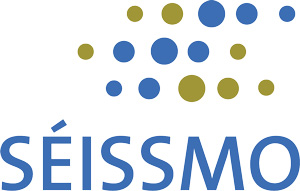Dyads and triads with
your target group
Dyads and triads are a qualitative research method often used in contexts where there are relationships between users, as they allow for more intimate settings than focus groups and offer more flexibility in segmenting audiences.
This intimate setting is particularly fitting when your target group is heterogeneous or simply requires a lot of individual time and attention, allowing for a better understanding of both individual and social levels.
Dyads
The word dyad comes from the ancient Greek δυάς (duás) 'pair'.
Dyads are in-depth interviews with 2 participants. They are used when it is necessary to study brands, products or behaviours, etc. in the context of personal interaction.
Depending on your research goals, there are several ways to approach dyads:
1) Have two participants who may know each other (husband & wife, parent & child, two friends or co-workers, etc.). This approach works well with children or younger participants.
2) Invite strangers with similar behaviours and interests
3) Have a conflict couple to participate in the study. In the case of a conflict couple, the moderator tries to dramatise the differences between them. This is useful when studying loyal users of two different brands or products to learn more about the reasons for brand loyalty, as well as for many other research tasks.
Triads
A triad is a qualitative research interview or discussion with three participants, which combines the advantages of a focus group and an in-depth interview at the same time.
The facilitator can still focus on the questions while getting a variety of opinions through the group setting. As with dyads, this method is useful if you want to explore controversial elements or create a conversation where respondents can share ideas with each other. Participants can be selected according to various criteria, such as different customer types, different generations or users of different brands.
For example, we have already had good experience with dyads and triads when it comes to interviewing experts on a particular topic, as they give each expert ample opportunity to share his or her knowledge with the moderator, rather than competing against too many other opinions in a group discussion. Nevertheless, individual opinions are challenged, and an exchange is created.
Read more on Brand and Marketing
Mix Research
Pre-tasks for consumers, personal excursions
Collages, mime, role plays on brand values and facets
Related articles
The other 3 pillars of our research expertise
Exploratory Research
WE DIG TO THE BOTTOM of consumers' minds
- Consumer attitudes, behaviour, drivers and barriers
- Usage patterns and habits, customer journeys
- Lifestyle research
- Market landscape, mental maps
- Latent needs, new territories
- Consumer segmentation, typology, persona
Shopper Research
- Shopping experience (online and offline)
- Optimal layout, co-creation with Do-It-YourShelf
- Shopping mood, shopping mission
- Loyalty drivers
Product & Packaging Test
- Opportunities for adopting new concepts and ideas (both products and services); addiction factor
- New formulas, flavours, fragrances, textures, colours, shapes, dosage forms, handling, devices, packaging materials, service components, names, claims, etc.
- Customer & user experience

